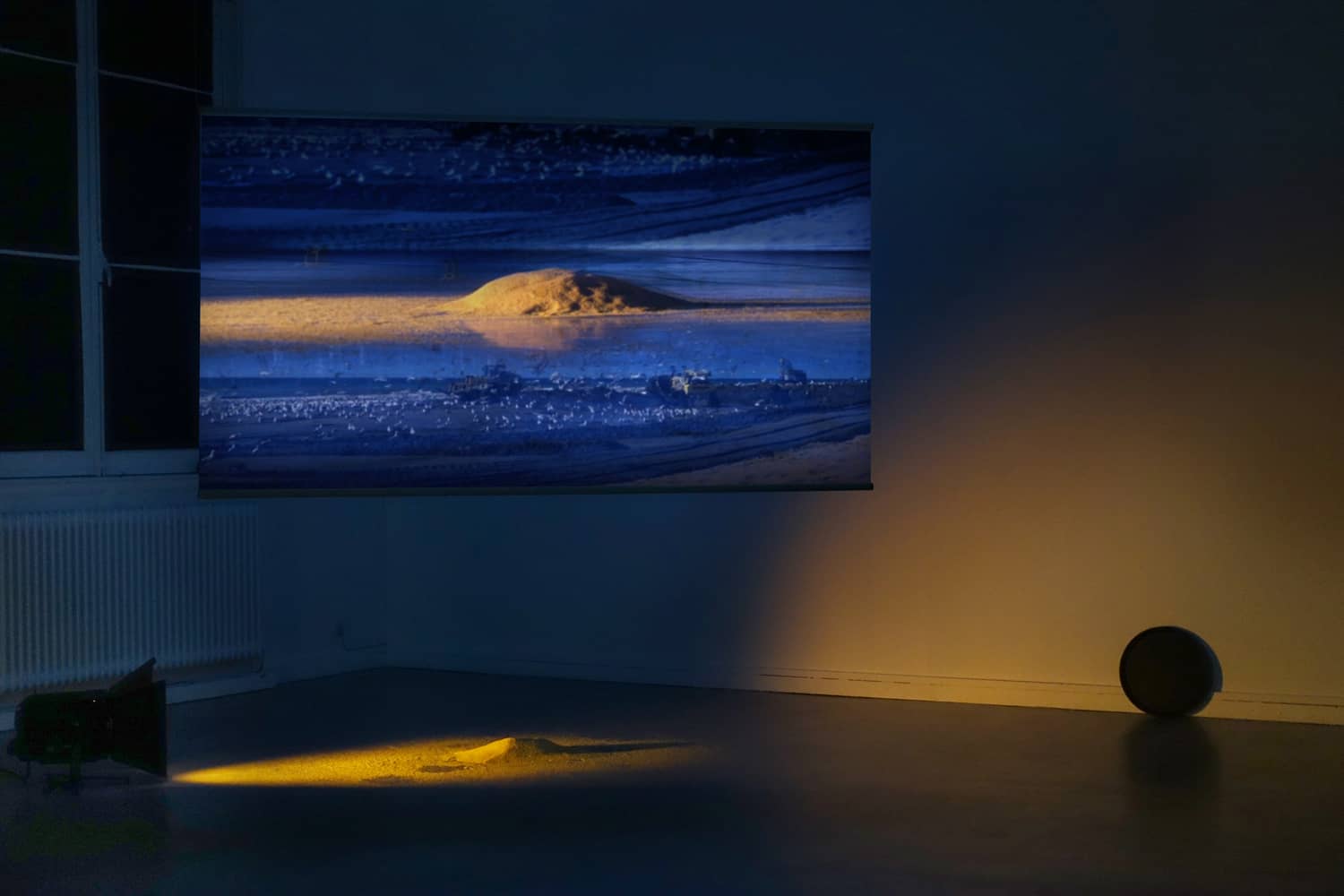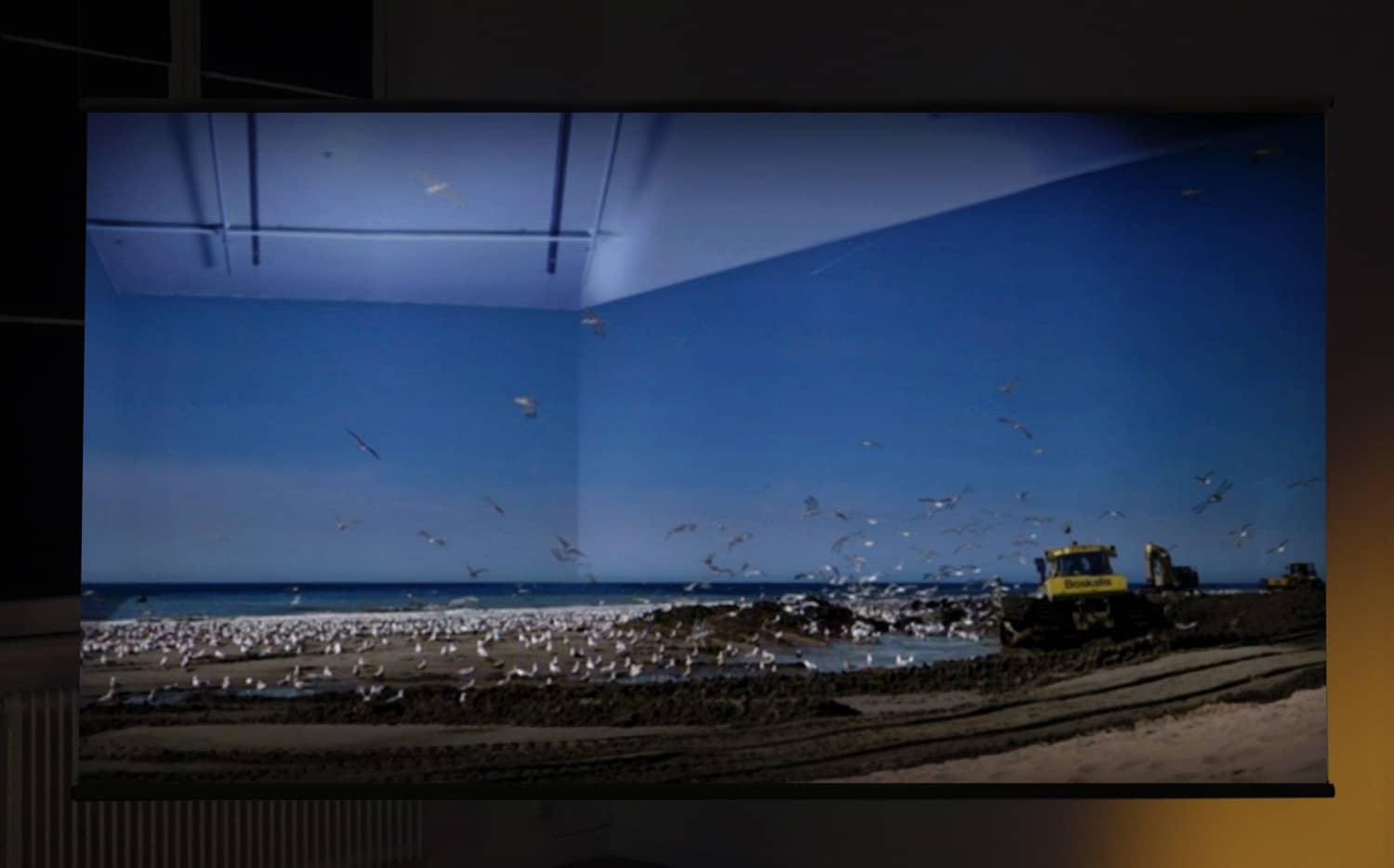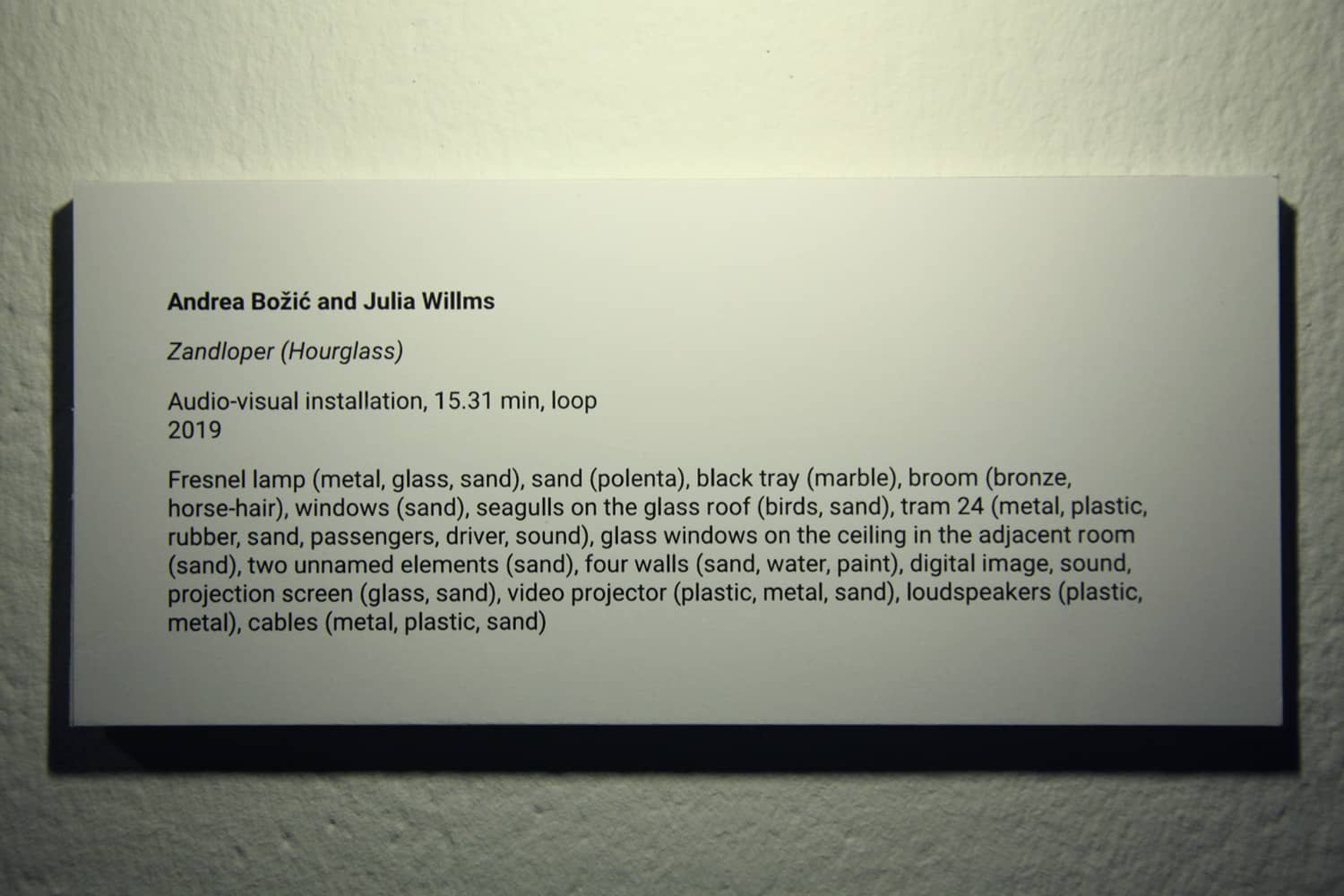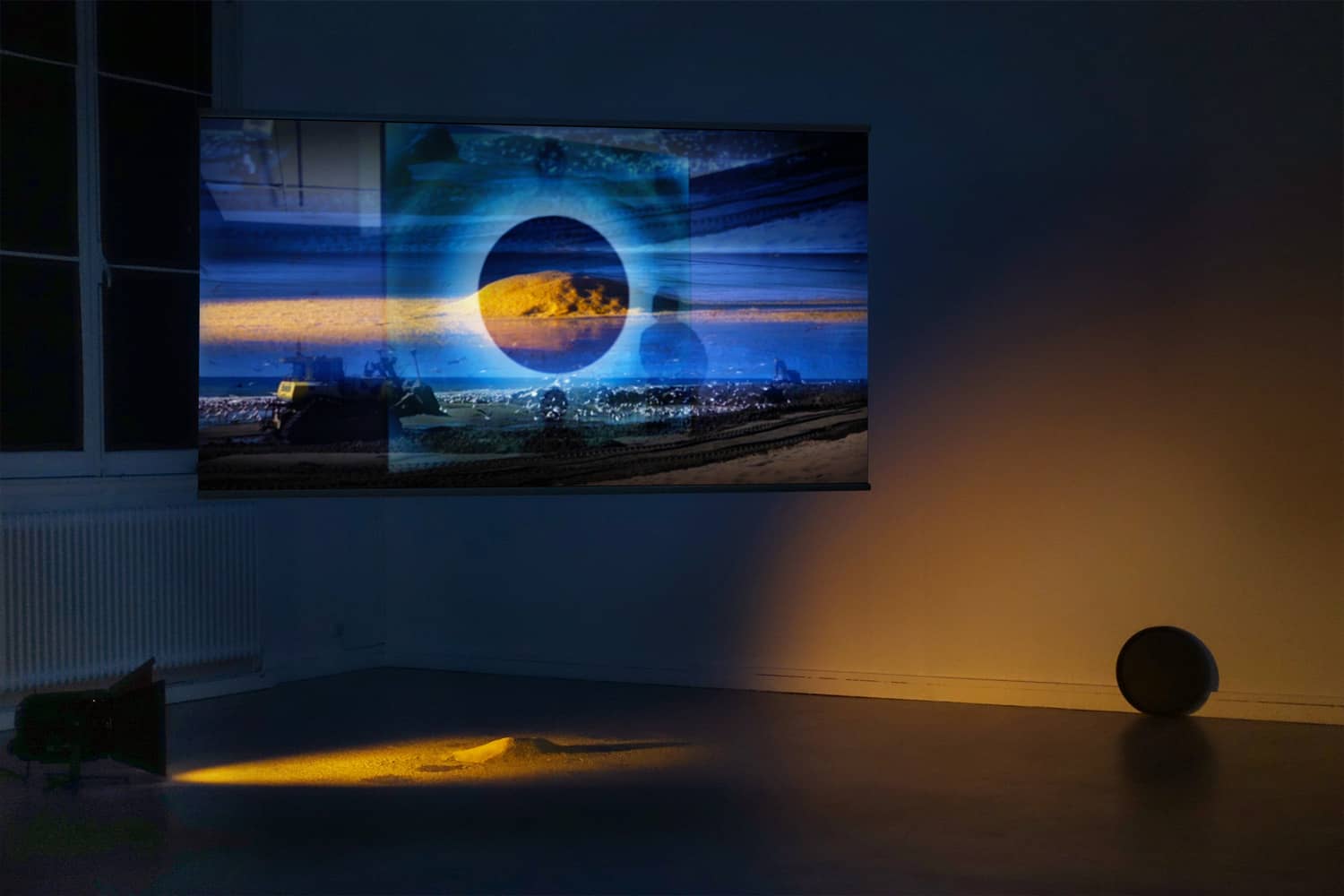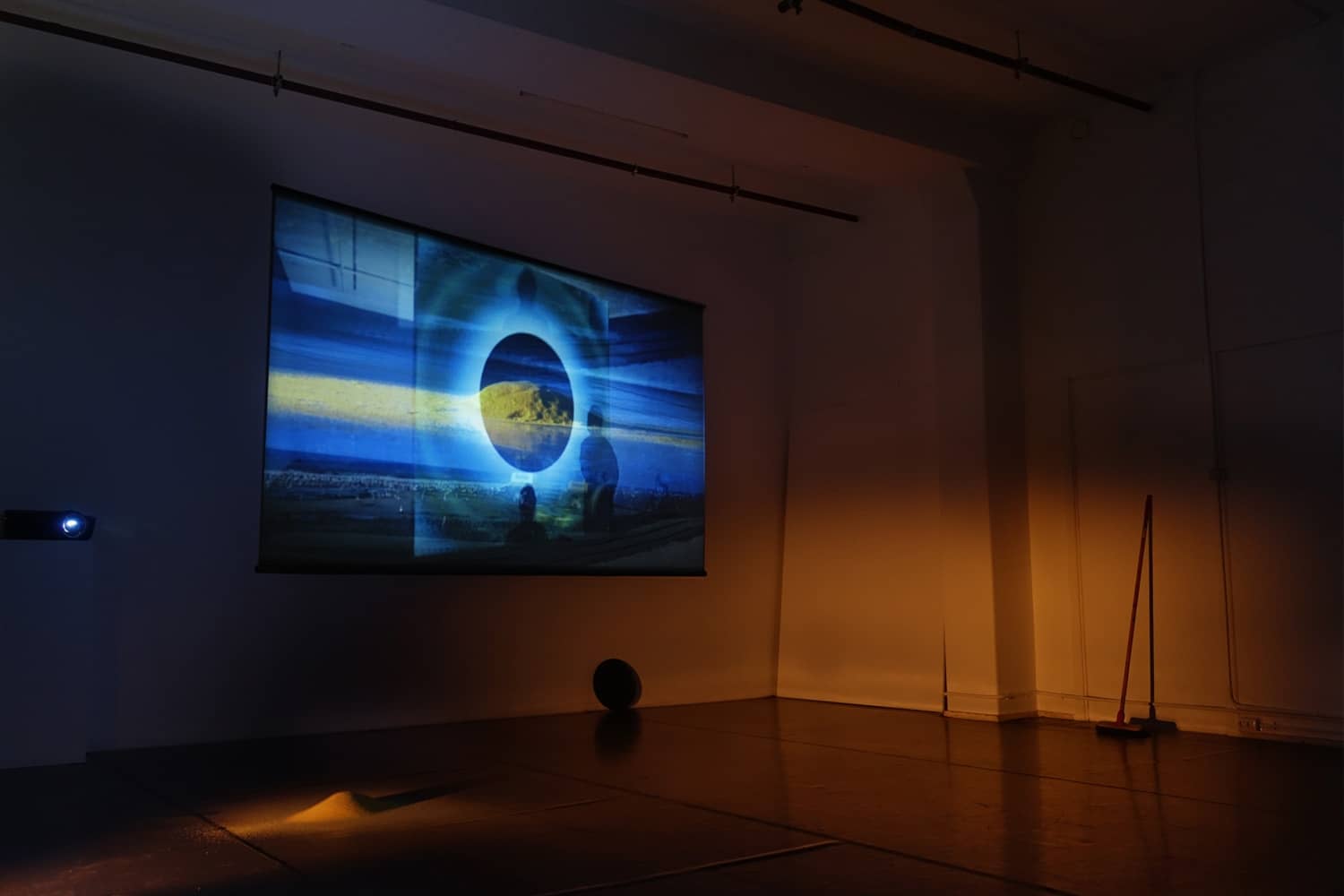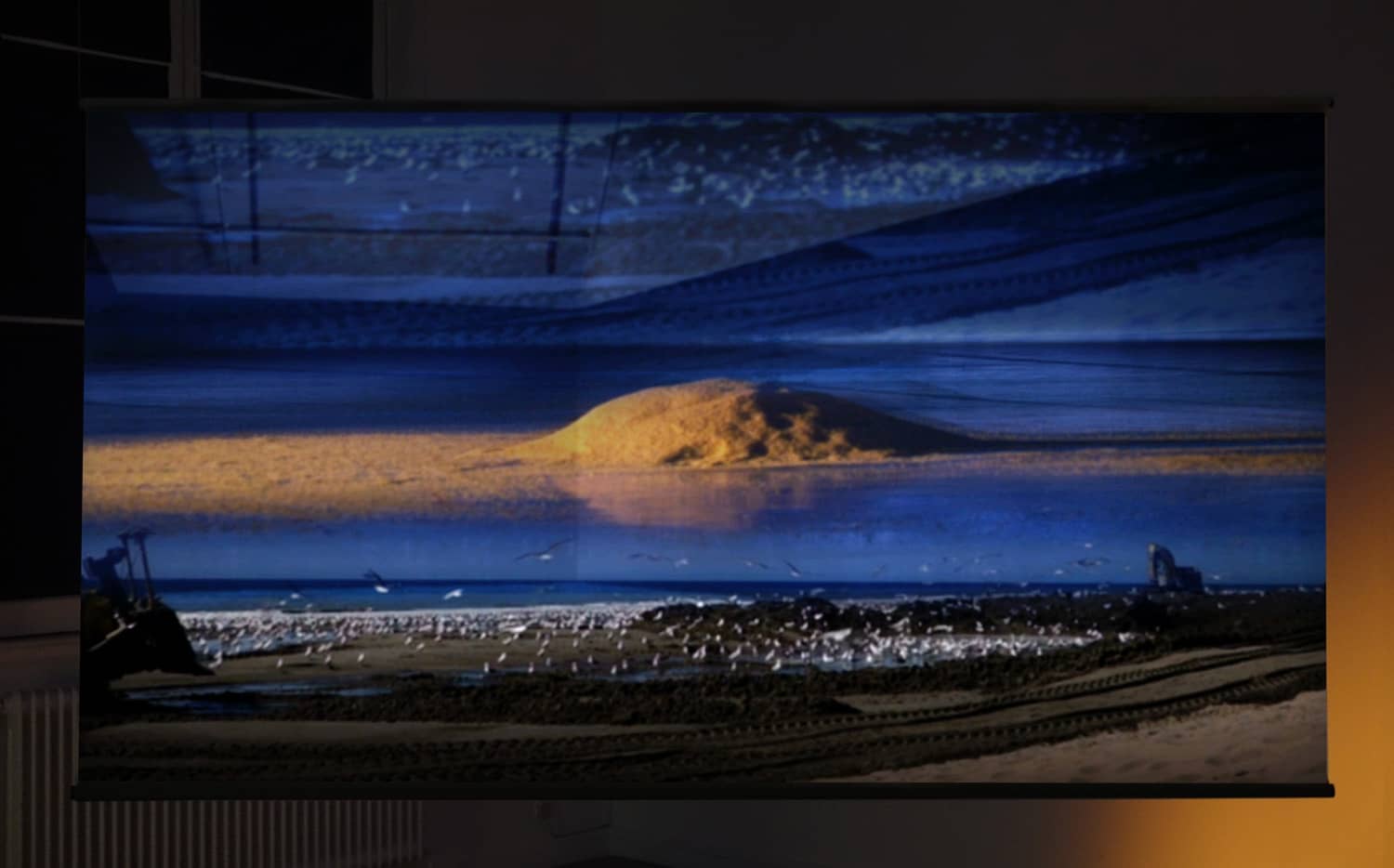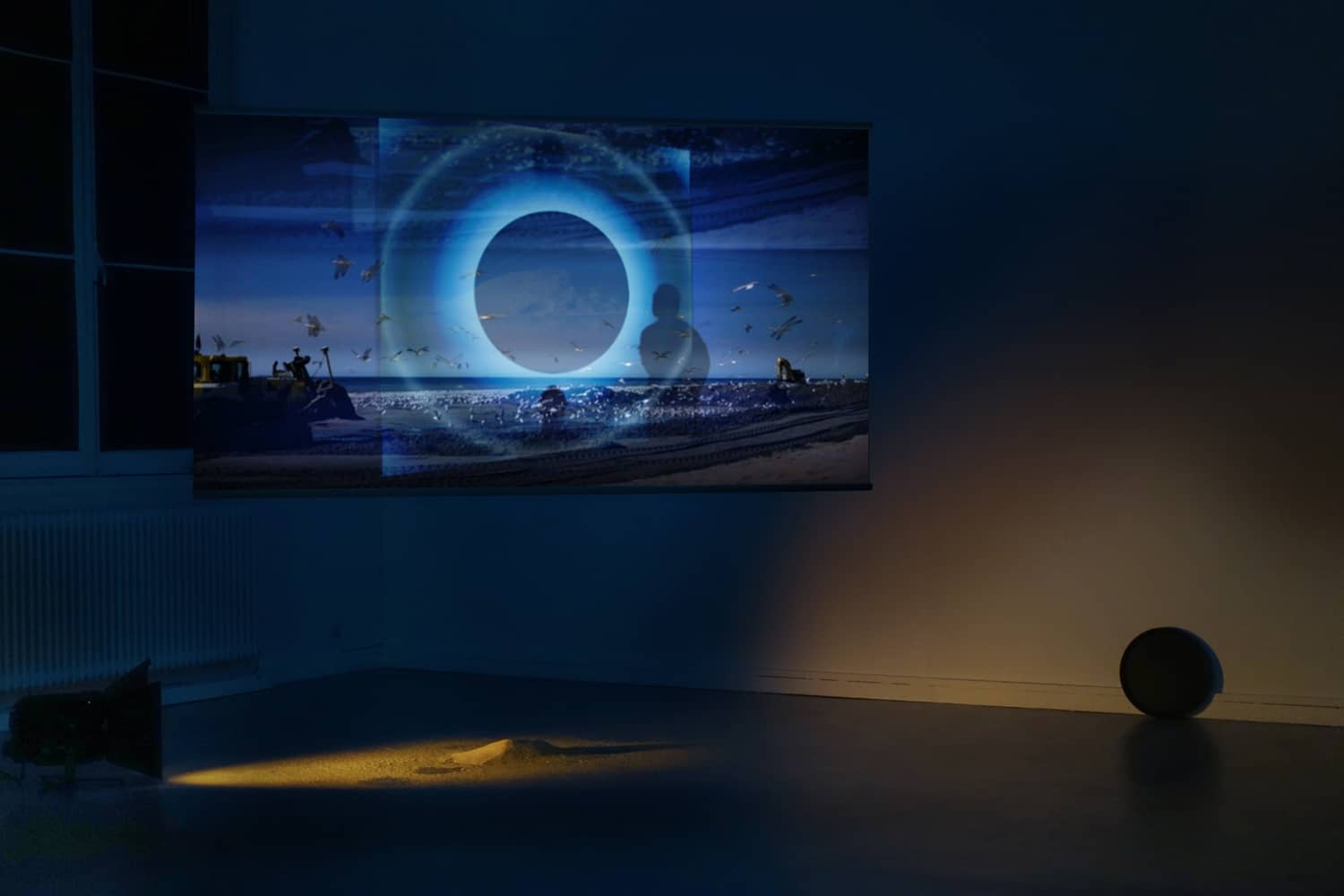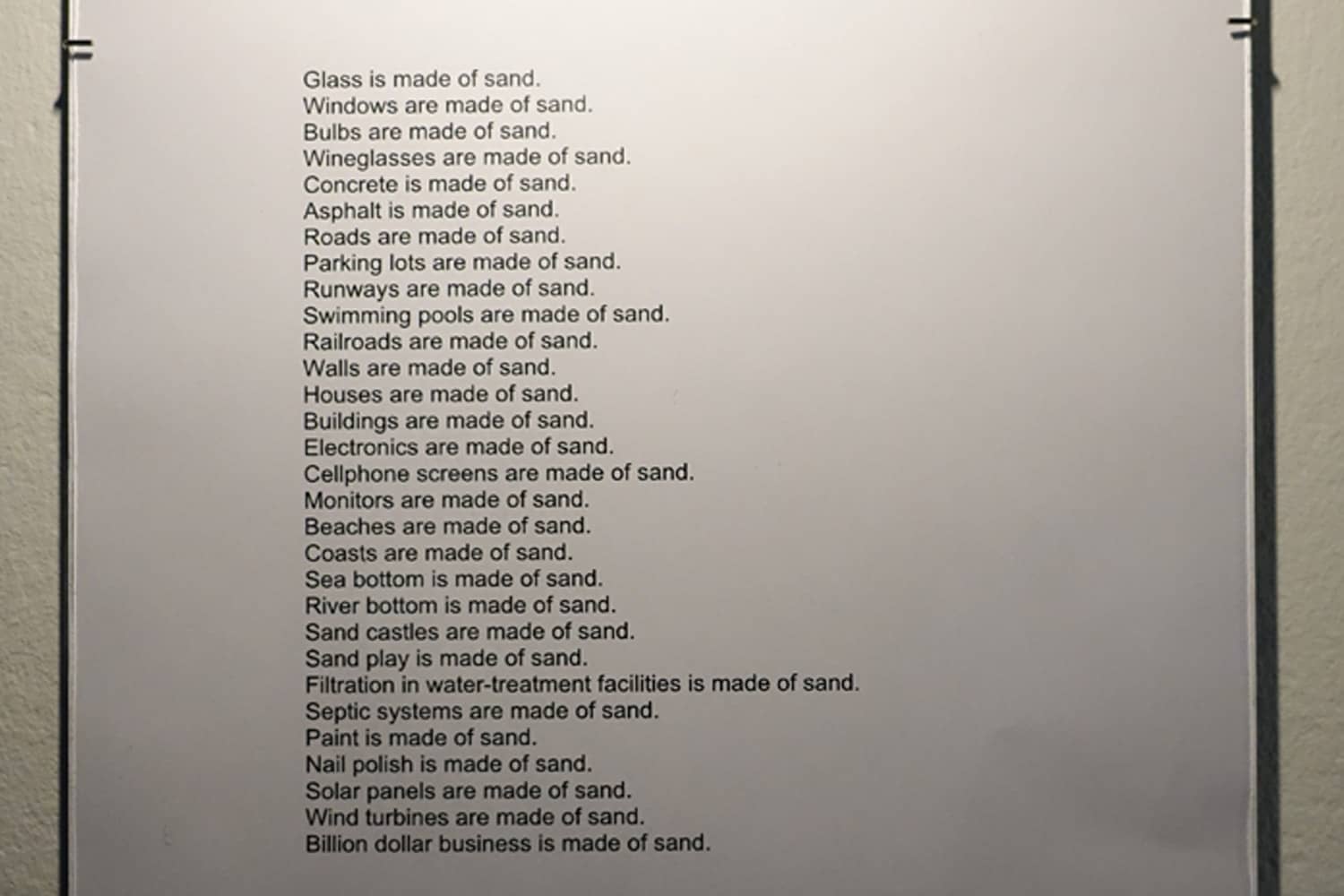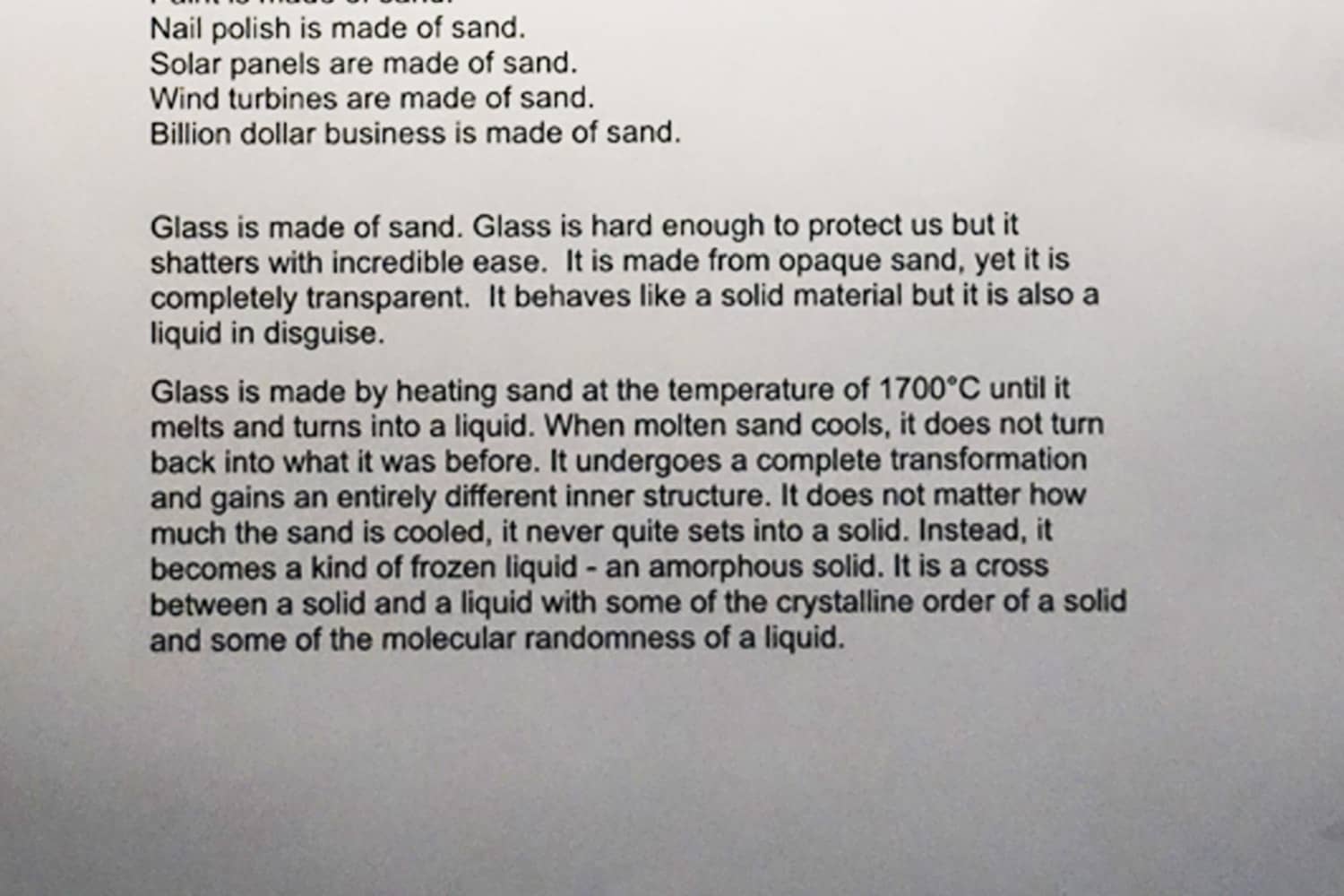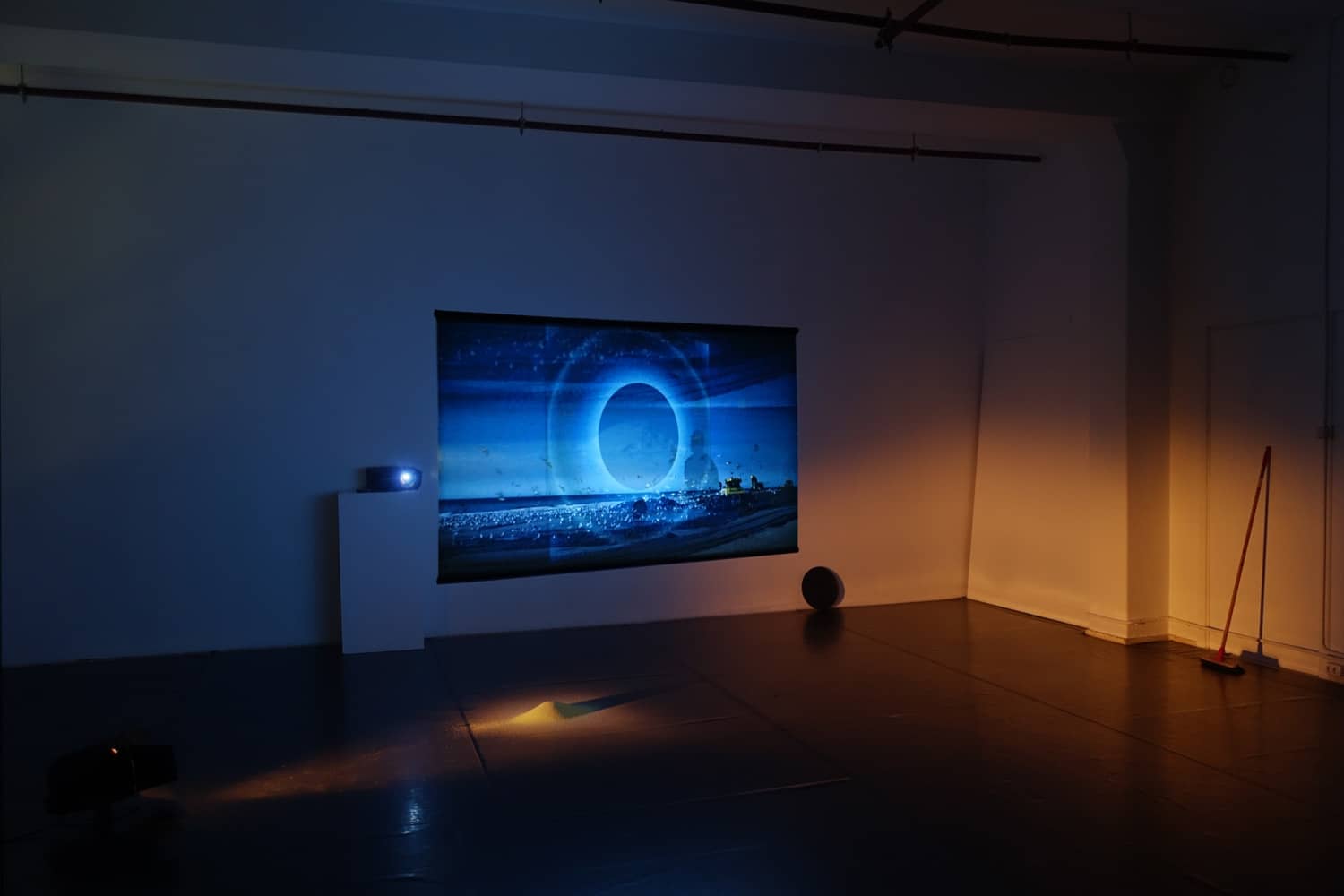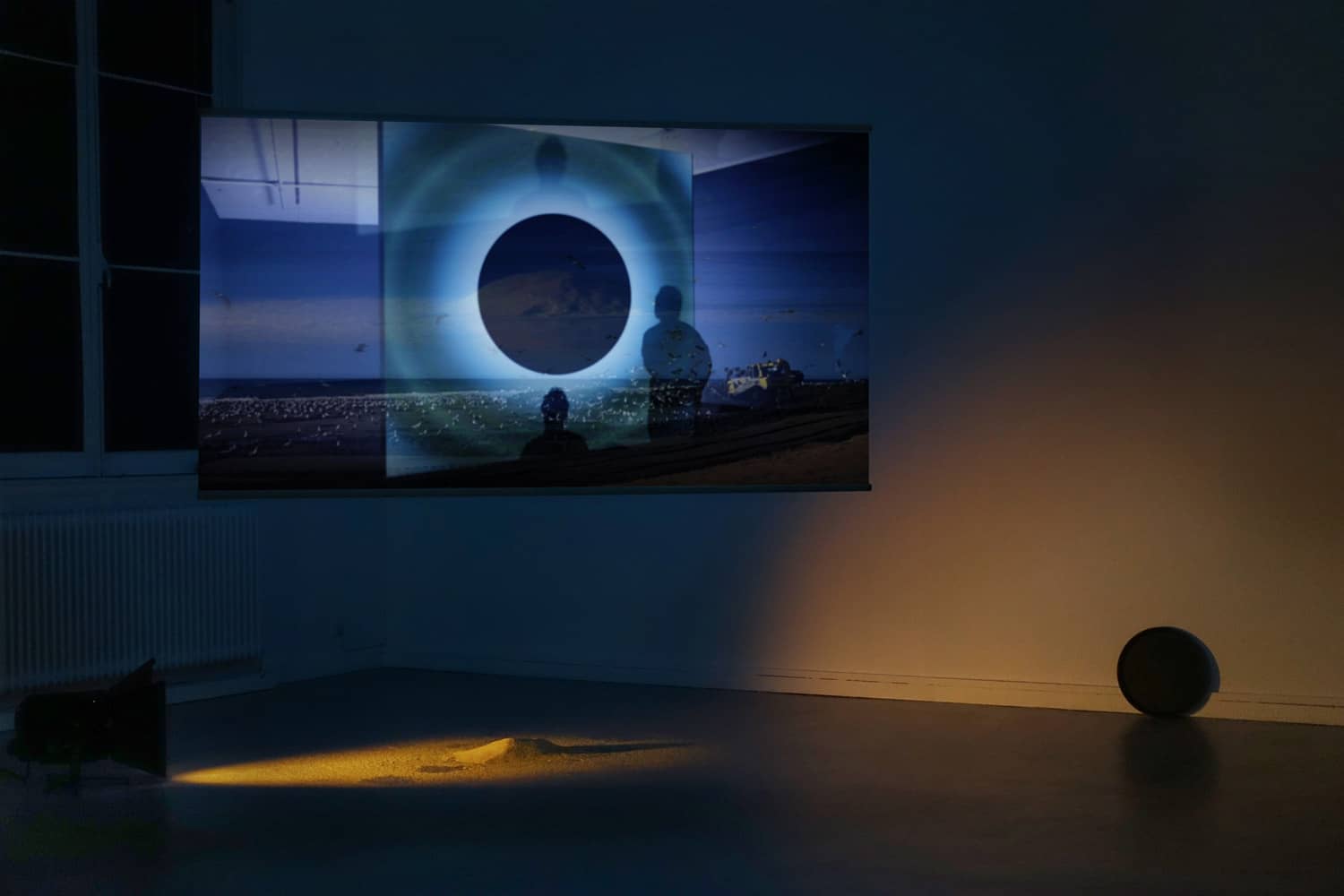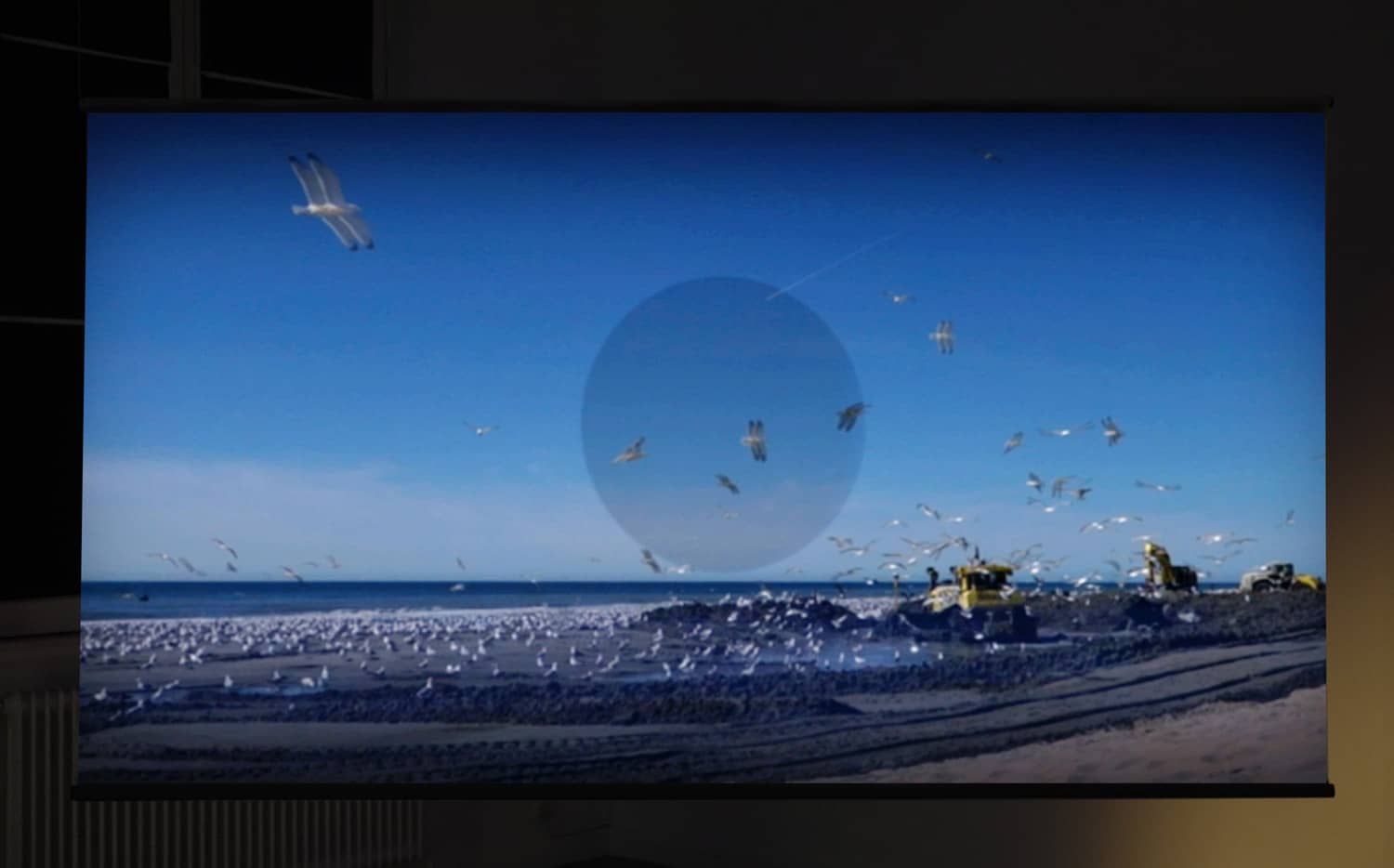Expanded audio-visual installation, 15.31 min, loop, 2019
by Andrea Božić and Julia Willms
Fresnel lamp (metal, glass, sand), sand (polenta), black tray (marble), broom (bronze, horse-hair), windows (sand), seagulls on the glass roof (birds, sand), tram 24 (metal, plastic, rubber, sand, passengers, driver, sound), glass windows on the ceiling in the adjacent room (sand), two unnamed elements (sand), four walls (sand, water, paint), digital image, sound, projection screen (glass, sand), video projector (plastic, metal, sand), loudspeakers (plastic, metal), cables (metal, plastic, sand)
Zandloper (Hourglass)
Zandloper (Hourglass)
Glass is made of sand. Glass is hard enough to protect us but it shatters with incredible ease. It is made from opaque sand, yet it is completely transparent. It behaves like a solid material but it is also a liquid in disguise.
Zandloper is an audio-visual installation that acts as an interface that plays on the visitor’s gaze towards the space and the environment they are in. The installation acts as an audio-visual membrane between the cinematic and the physical space where the edges of the work extend – potentially indefinitely. Zandloper [Hourglass] features a mesmerizing cycle of exploitation, co-dependency, opportunism, dream, fiction and habitual reality.
Zandloper features sand as a central ‘player’ through which the gaze towards the environment is transformed. There is a heap of sand on the floor lit by a theatre lamp creating an artificial and theatricalised miniature landscape. The video image of the sand is fed back into the video projection hanging in the space (projected on glass). The image of sand is merged through slow crossfades with the footage of cranes ‘repairing’ a beach in the Netherlands: taking the sand from the bottom of the sea and spreading it out on land to prevent the beach from disappearing and, as a by-product, a massive flock of sea gulls flying around amongst the cranes feasting on the marine life nested in the newly fished sand. The image is a mesmerizing cycle of opportunism, co-dependency and exploitation.
The two images are further merged through slow cross-fades with a photograph of a visitor looking at an art installation that features an after-image: a black dot that looks like a black sun, an iris of an eye gazing back at the visitor and creates an afterimage for the visitor gazing. The video images cross-fade extremely slowly into one other creating a perpetually modulating painting-like tapestry of interwoven spaces creating a hypnotizing effect on the viewer. This effect is interrupted at regular intervals by images that seemingly come from another ‘order’ – a mundane object (a broom, a tray) that look like they are incidentally lying in the actual space suddenly appear in the video image. A shadow interrupts the image, seemingly a shadow of a visitor that stands in the way of the video projector – but is in fact recorded.
Cinematic immersion combined with interruption invites the viewer to an inquiring gaze towards the surrounding: what is all part of this installation, what is all ‘staged’. Upon further investigation of the installation, the visitor finds out that almost everything in the room is made of sand: all glass in the room (windows, the projection screen) is made of sand, the walls and the floor are made of sand, the monitors and phones are made of sand, there is even sand in wine. Part of the installation is a label listing all the materials, that are part of the work which extend the gaze further outside of the room (a tram outside of the window, birds on the roof, two unnamed objects) or shift the perception of what is seen as there is a dissonance between the apparent and described materiality of the elements (the sand on the floor is in fact polenta, the broom is made of bronze and horse hair, the black tray of marble).
In Zandloper, we use sand as an example of organic material found everywhere in nature and heavily used in man-made products (such as sand for the construction of urban environments) following its process of materiality transformation through industrial processing, alchemy and recycling. Through it, we juxtapose and overlaying several systems – machinic/mechanical, artificial and organic intelligence. The work plays with the notion of pseudo-interactivity: the installation seems to be interacting with us and the environment but its logic is rather mysterious and needs further investigation (such as the recorded visitor’s shadow); in fact, it seems to be ‘pseudo-interactivity’ but it cannot be proved.
With this, we evoke the idea of unverifiable reality: things are not what they look like (glass is made of sand), some things are obvious lies (broom is made of bronze) but it cannot be verified in a given situation so it can be taken as speculative truth. The installation explores the potentiality in the concept of the unverifiable reality as key in bringing together how dreams work (where the distinction between the truth and lies is irrelevant both for the dreamer but also in therapy for purposes of psychoanalysis) and the contemporary moment of post-truth and media-capitalism which strives to create an unverified reality: a reality in which criteria of authenticity are impossible to apply.
Zandloper (Hourglass) applies a cinematic procedure to architectural space in a site-responsive way playing on the edges of where the work ends and what all belongs to the work. The installation establishes an interplay between several interconnected systems and places them into the space so they resonate in the larger environment. It acts as an interface (a membrane) that re-organises the spectators attention towards the space they are in.
Exhibitions:
- i will not be just a tourist in the world of images just watching images passing by which i cannot live in make love to possess as permanent sources of joy and ecstasy, Arti et Amicitiae, Amsterdam, The Netherlands, 2019
- Spectra Salon: Unverifiable Reality, Marci Panis, Amsterdam, The Netherlands, 2019
- Sand - Resource, Leben, Sehnsucht / /Sand: Resource, Life, Longing, Museum Sinclair Haus, Bad Homburg, 2023
